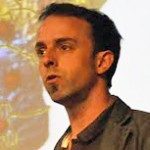Link to Pubmed [PMID] – 30633739
PLoS Biol. 2019 Jan;17(1):e3000105
Human African trypanosomiasis (HAT), or African sleeping sickness, is a fatal disease found throughout sub-Saharan Africa. The disease is close to elimination in many areas, although it was similarly close to elimination once before and subsequently reemerged, despite seemingly low rates of transmission. Determining how these foci persisted and overcame an apparent transmission paradox is key to finally eliminating HAT. By assessing clinical, laboratory, and mathematical data, we propose that asymptomatic infections contribute to transmission through the presence of an overlooked reservoir of skin-dwelling parasites. Our assessment suggests that a combination of asymptomatic and parasitaemic cases is sufficient to maintain transmission at foci without animal reservoirs, and we argue that the current policy not to treat asymptomatic HAT should be reconsidered.


